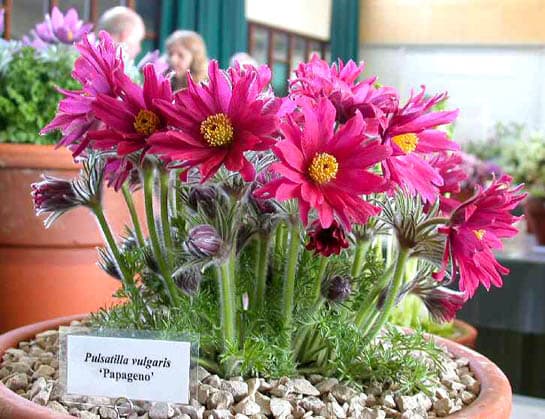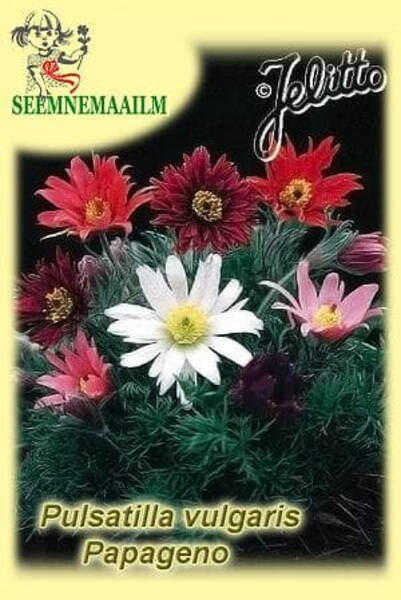Ex Tax: 1.75€
A worthy inhabitant of the rock garden.
Physical Characteristics: Perennial growing to 0.2m by 0.3m. It is hardy to zone 5 and is not frost tender. It is in flower from April to May, and the seeds ripen from June to July. The flowers are hermaphrodite (have both male and female organs) and are pollinated by Bees. The plant is self-fertile. We rate it 2 out of 5 for usefulness.
The plant prefers: light (sandy) and medium (loamy) soils and requires well-drained soil. The plant prefers acid, neutral and basic (alkaline) soils and can grow in very alkaline soil. It cannot grow in the shade. It requires dry or moist soil and can tolerate drought. Habitats and Possible Locations Ground Cover. Cultivation details Requires a well-drained humus-rich gritty soil in a sunny position. Lime tolerant. Prefers lime. Grows best in well-drained chalky soil in a dry warm situation. Established plants are fairly drought-tolerant.
A very hardy plant, tolerating temperatures down to about -20°C.
A very ornamental plant, there are many named varieties. The plant has become rare in its natural environment, due partly to over-collecting and partly to habitat loss. Large plants transplant badly.
A greedy plant, inhibiting the growth of nearby plants, especially legumes. Propagation Seed - best sown as soon as it is ripe in early summer in a cold frame. The seed usually germinates in about 2 - 3 weeks. Sow stored seed in late winter in a cold frame. Germination takes about 1 - 6 months at 15°C. When they are large enough to handle, prick the seedlings out into individual pots and grow them on in the greenhouse for at least their first winter. Plant them out into their permanent positions in the spring. Root cuttings, 4 cm long taken in early winter, potted up in a mixture of peat and sand. They can also be taken in July/August and planted vertically in pots in a greenhouse or frame. Some care is needed since the plant resents root disturbance.
Potting of anemone.
Windflowers should be grown in very well-drained, moderately fertile soil in a lightly shaded or sunny location. They can be grown from zones 4 to 10 depending upon the variety. Plant the tubers in the fall or spring, unless you live north of their adapted zones; in this case, plant in the spring. Before planting, soak the tubers for a few hours or overnight; if you soak them overnight, you'll be able to see the slightly swollen areas from which shoots will grow. Plant the tubers 3 to 4 inches deep and 4 to 6 inches apart. If youre not sure which end is up, lay them on their sides.
Propagation of anemone
The crowns can be divided in the spring or fall. Pieces of the root can be taken off in the fall or early spring and placed in containers of sandy loam and leaf mould. Set these containers in a cold frame or cool greenhouse. The cuttings will have enough roots to be planted outside the following summer. After pollination, the central mass of the flowers ripens into a tight cone of feathery seeds, called achenes. These seeds are dispersed in the early summer breezes. The seeds may be sown in containers of sandy soil in the fall. However, the seedlings grow slowly and hybrids won t come true using this propagating method.

Family: Ranunculaceae.
Origin: Species is distributed from Great Britain and western France to Sweden, east to Ukraine
Special Features: A remarkable seed strain which has fringed, semi-double crocus-shaped blossoms and attractive fern-like, cut-leaf foliage. The subsequent seed heads look like little feather dusters
History: Introduced by JELITTO PERENNIAL SEEDS in 1993. Papageno was the lovable character in the opera "The magic flute"
Colour: A mixture of creamy white, bright pink, dark red and light blue to violet flowers
Natural Flowering Period: March - April
Winter Hardiness: Z5.
Growth Habit: Small tufts
Foliage: Fern-like or carroty
Height with Flower: 30 cm
Spacing between Plants: 30 cm
Soil Requirement: Well-drained soils, slightly alkaline, pH 6.0 - 7.2
Location: Full sun
Use: For the rockgarden or front of the border. Plant together with Iberis "Snow Cushion", Alyssum (Aurinia) saxatile or Arabis procurrens
Cultural Tips:
Grams per 1000 seeds: 2,5
Seed Requirement: 5 g / 1000 plants
Best Sowing Date: November - March
Way of Germination: Tricky Germinator
Germination: These seeds germinate rapidly depending on species and origin. If germination does not occur after 3-4 weeks a cooling period of 2-4 weeks is recommended.
Germination to Transplant: 4 - 8 weeks
Transplanting to salable Plant: 6 - 10 weeks
Fertilization: Medium.
Eng.: Pasque flower, European pasque flower, pulsatilla. Suom.: Lännenkylmänkukka, tarhakylmänkukka. Sven.: Backsippa, backvippa, gökskälla. Bot. syn.: Anemone pulsatilla L.















